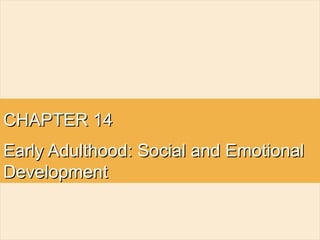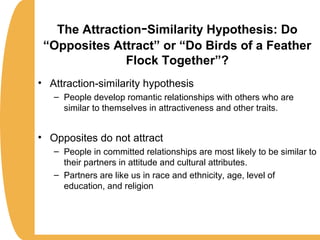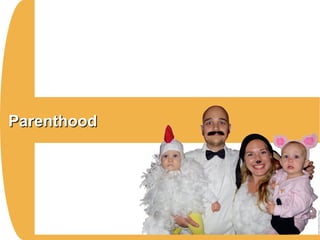Early adulthood spans ages 20 to 40 and involves key developmental tasks like selecting a mate, starting a family, and developing independence. Young adults separate from their parents through leaving home, attending college, joining the military, or living independently. They develop intimacy through romantic relationships while avoiding isolation. Marriage and parenthood are common, though cohabitation and divorce are also increasing trends. Overall, early adulthood involves establishing social and financial independence while forming long-term relationships.



















































